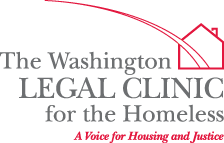Last Monday, July 9, we delivered a letter signed by 46 experts and organizations to the DC Council asking them to support emergency legislation introduced by Councilmember Trayon White (Ward 8) with the goals of stopping any abatement, demolition, or deconstruction activity on the nearby buildings until the families have exited and ensuring that families move to safe, stable settings before DC General closes. But early Tuesday morning, just hours before the DC Council’s last legislative session before their summer recess, we received a new draft of the legislation. This version no longer met our goals. We withdrew our support, as did several other organizations. Nevertheless, after multiple Councilmembers expressed serious concerns about what was happening at DC General, the new, weakened legislation passed unanimously.
Why did the legislation change at the last minute?
In order for the DC Council to pass emergency legislation, it cannot have a cost, or a “fiscal impact.” The Mayor wields a lot of power in determining whether a bill will have a cost. (It is not unusual for the Mayor to say a bill that she opposes has a larger fiscal impact than anyone expects—it is a pretty common and effective way for her to fight the Council’s legislation.) On Monday, the Department of General Services alleged a cost of $950,000 for “demobilizing” the workers currently engaged in abatement and demolition on the DC General site. This alleged cost effectively prevented Councilmember Trayon White from including a prohibition on abatement or demolition in the bill. (Bills generally can be passed “subject to appropriation,” but the Council has a practice of not allowing emergency bills to move forward if they have a fiscal impact, because they cannot go into effect until the funding is devoted to implement the bill—and the Mayor has complete control over that funding outside of the annual budget process.)
The part that required safe transfer of families prior to closure, meanwhile, was under attack by the Bowser Administration as well. They were fighting any attempt to “tie their hands” or restrict the types of settings to which families could be transferred. They simultaneously assured Councilmembers that they had no intention of moving any of the families to hotels (some of which had come under attack for having worse conditions than DC General) and were fighting for language changes to the bill to allow them to do just that.
What does the “D.C. General Resident Relocation Emergency Act of 2018” require?
- The abatement, demolition and deconstruction work being done on the DC General campus must “meet all applicable environmental, health, and safety standards.”
We know that the Council was unable to do much more on this issue because of the alleged fiscal impact for actually stopping the work. As Councilmember Trayon White said: “Unfortunately, I was not able to include [language halting demolition] because of the fiscal impact.” During our advocacy for Councilmember Trayon White’s original bill, we heard broad support for delaying the Mayor’s plan to demolish the lead- and asbestos- filled “Building 9,” which is located right behind the family shelter, until the families left DC General. Many agree with us that any amount of risk to the health and safety of 289 homeless children is unacceptable. Almost every Council office we visited agreed that they had heard no good reason for moving forward with demolition and deconstruction while the families were still there, and no one, not the Mayor, nor any Council member, could articulate a downside to delaying the work until the families were gone. As Councilmember Robert White said, “the Bowser administration has “repeatedly misled the Council to move the demolition forward, even as the process departed from the original plan … they’ve prioritized arbitrary deadlines and talking points ahead of the needs of families.”
As we’ve maintained all along, existing “applicable” standards may be insufficient to protect the health and safety of DC General residents. For instance, DC is not operating under the most protective standard in regards to removing the risk of lead poisoning– the standard imposed on child-occupied buildings. Current law only requires using this higher standard for buildings within 100 feet of a child-occupied building, but the building being demolished is 250 feet away from the shelter. Even if DC voluntarily used the more protective standard, they would also need to use the newly proposed (but not yet in effect) Environmental Protection Agency regulations that were promulgated in response to updated scientific evidence on the amount of lead it takes to cause irreversible damage. In other words, there is a significant gap between the most protective standard to prevent lead poisoning and what DC intends to do—even if they follow the letter of the law. And that’s all assuming that DC doesn’t get sloppy, doesn’t make any mistakes, doesn’t inadequately supervise its contractor that is doing the work. Therefore, requiring them to follow the letter of the law is not reassuring, and may very well result in serious health consequences to children.
- The Mayor must report on samples taken to determine the presence of lead and asbestos and whether any samples exceed permissible limits.
We welcome stronger oversight of the demolition and deconstruction process, but this part of the law feels woefully insufficient. First, this does not in any way require DC to take any samples—it just requires them to report on samples if they decide to take them. It also does not say what kind of samples (soil samples, air monitor results, etc.) and from where (directly around the site, on the playground, etc.). We have just learned from Councilmember Nadeau’s office that the Mayor does not intend to take any samples for lead on the site because they do not believe that there is a risk of lead being transmitted 250 feet away. Fundamentally, though, what makes this section inadequate is that it will be too late for the children who live in the shelter if samples show contamination. As our colleague from Children’s Law Center stated: “These reporting requirements aren’t effective. They’re being reported to the Council when the Council is not even in session… There’s nothing that triggers enforcement or any next step. It doesn’t even say what happens if they find [elevated levels of] lead and asbestos.”
- The Mayor shall relocate DC General residents to appropriate permanent housing, DC General replacement shelters, or “any units under contract by the District specifically for the purpose of housing D.C. General Family Shelter residents.”
The original language introduced by Councilmember Trayon White did not include the option of “any units under contract by the District specifically for the purpose of housing D.C. General Family Shelter residents.” We had heard that the Mayor was advocating for the flexibility to place families anywhere in the system, including hotels. We opposed that, because we didn’t want the Mayor to force families into hotels that have worse conditions than DC General. (We supported language that would allow families to choose placement into hotels, however.) Prior to the vote, Councilmember Anita Bonds stated that part of the reason she could support this bill is because she had been assured by the Mayor that families would not be transferred to hotels. Councilmember Nadeau stated that “…the goal is not to move [residents who are in DC General] into a secondary shelter, but to house them and house them for the long term.” We were pleasantly surprised to see that the plain language of this section does not allow transfers to hotels at all, despite strong pressure from the Administration. Hotels are not permanent housing, are not DC General replacement shelters, and are not contracted specifically “for the purpose of housing DC General Family Shelter residents.” (Of course, once again, there would be no point to this legislation if it included hotels, because it would be re-codifying what another law (the Homeless Services Reform Act) already allows the Mayor to do.)
- The Mayor has to issue a weekly report starting July 27 (number of families left, number of exits by program, and number of families facing significant barriers to exit) and a final report after the closure on “the number of families that remained at closure that necessitated a swift exit and the status of those families.”
The weekly report will give the Council an opportunity to assess whether the Mayor is truly using a coordinated assessment system to place families in the right program for their needs, or is just putting every family in rapid re-housing. Current law does not authorize a “swift exit” for the families—the Mayor still must provide 15 days notice for transfers of any remaining families. Not only has the Mayor committed to families that they will not be displaced by closure, but this emergency law actually requires that each family be relocated to specific, limited settings. The report also provides an opportunity for the public and the Council to assess DC’s progress in placing DC General families into housing. It is concerning, for instance, that the first report indicates that more than half of the families (87) have not even begun their housing search (see Question 7d in DHS response, document link at bottom of post).
What’s next?
The legislation did not go as far as we or many on the Council wanted it to, but we made some progress by prohibiting forced transfers of DC General families to hotels and motels and requiring additional reporting to the Council. Of course, effective oversight relies on both the Mayor transmitting accurate and thorough information to the Council and on the Council being able to respond effectively when that information is troubling. Councilmember Nadeau has already begun to receive some reports and information, and she is sharing that with advocates. (This is how we have learned that the Ward 8 shelter may face another delay, possibly not being ready for families to move in until December 1. (Question 2, DGS response, document link below)) We, in turn, will share information and reports with families at DC General and with you (see documents at bottom of post).
As of now, we anticipate that demolition of Building 9 will occur the first week of August. The Council may have been unable to require the Mayor to stop the demolition and deconstruction of surrounding buildings while the families are still at DC General, but that doesn’t mean she has to move ahead. If you agree that the Mayor should wait until the families are gone to do that work, that any risk to homeless children is unacceptable, then you should let her know:
Tweet: @MayorBowser
Email: eom@dc.gov
Phone: (202) 727-2643
Documents received:
7.13.18 DHS STFH Roundtable Follow-Up. FINAL
7.13.18 DC General Report. FINAL








Just curious here, what asbestos containing materials (ACMs) were/are present in the building, and which ones are being demolished in place? What lead containing / based paints? Is there a pre-demolition inspection report available?
Is there a financial connection between the demolition contractor and the industrial hygiene firm?
The report furnished by the IH firm is incredibly lacking in detail. What engineering controls were employed by the demolition firm to prevent dust migration? I have to assume the demolition firm removed the friable ACM from the building before proceeding with demolition, otherwise they are in violation of NESHAP. Is final air sampling data in accordance with DOEE regulations available to the public? I also presume the IH firm documented that the nonfriable materials left in place are remaining intact during demolition.
Nuisance dust data is presented, which the IH firm compared to the OSHA standard, which isn’t applicable. The EPA 2.5 NAAQS should be relied on for comparison.
I see no ambient or surface wipe lead testing data. I see nothing about removal of mercury lighting tubes prior to demolition.